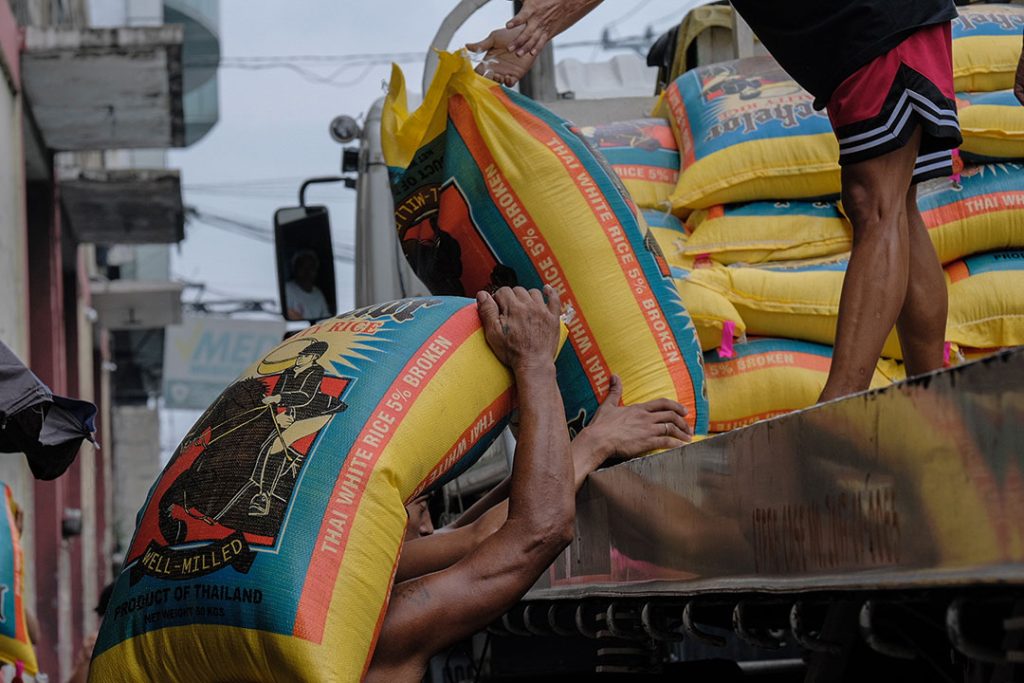Tags
Rice prices seen to further fall

DOMESTIC RICE PRICES are likely to decline further with the entry of more imports under lowered tariffs, the National Economic and Development Authority (NEDA) said.
“There’s a great amount of imports coming in from the effects of the tariff reduction plus of course the development of the global market,” NEDA Secretary Arsenio M. Balisacan told reporters on the sidelines of an event late on Tuesday.
President Ferdinand R. Marcos, Jr. issued Executive Order No. 62, which slashed tariffs on rice imports to 15% from 35% previously, until 2028. The lower tariff rates on rice took effect on July 5.
Agriculture officials have previously said the lower tariffs are expected to bring down rice prices by P6-P7 per kilo.
“We should expect a greater translation of the tariff reduction into lower prices. But don’t expect too much because the world prices are still high,” Mr. Balisacan said.
The Food and Agriculture Organization’s (FAO) All Rice Price Index, which follows rice prices in key exporting countries, rose to 137.3 as of end-August from 127.9 in the same period a year ago. A higher price index means a rise in commodity prices over the period, while a lower index means otherwise.
In a Viber message, Rizal Commercial Banking Corp. Chief Economist Michael L. Ricafort said the full effect of lower tariffs on rice imports will likely be felt as early as the fourth quarter “as a function of competition from local and import rice amid lower world prices of rice.”
Leonardo A. Lanzona, an economics professor at the Ateneo de Manila University, said rice prices may fall by October.
“It is possible for prices to fall next month as a series of typhoons had destroyed domestic production. Importers would usually store their rice in anticipation of higher prices. Since immediate price increases are expected, then the release of imports would also be immediate,” he said in a Facebook Messenger chat.
However, Mr. Lanzona noted that rice prices may not drop “significantly” despite the lower tariffs.
“Port congestion can delay the influx of imported rice in the market. But more than this, since domestic production is weak, importers or through their collusions now have an incentive to control and limit the decrease in rice price,” he said.
To avoid this, Mr. Lanzona said the government should encourage greater domestic production.
“But government support for local production is also hampered by the decreased tariffs. In effect, we are caught in a situation where rice prices can still remain high and market supply is below the needs of the households,” he said.
Agriculture Secretary Francisco P. Tiu Laurel, Jr. on Monday said port congestion has caused delays in the release of rice imports. He said rice prices are projected to begin dropping in October, but a more significant drop is likely by January 2025.
“But since demand for food usually spikes in December, we anticipate seeing a more substantial drop in rice prices by January,” he said in a statement.
On Wednesday, the Philippine Ports Authority noted that consignees are taking longer to withdraw rice container shipments, leading to “possible artificial increases in rice prices.”
Despite this, the PPA recorded a 70% yard utilization, indicating that the country’s ports are not congested.
Mr. Balisacan also called on the need to invest in port development to lessen shipment traffic.
The latest data from the Agriculture department showed that imported regular milled rice costs P46.73 per kilogram this week, a P3.73 increase from P43 in the same period last year.
On the other hand, the price of well milled rice is at P51.45 per kilo, P6.45 higher than the P45 recorded a year ago. — B.M.D.Cruz
https://www.bworldonline.com/top-stories/2024/09/20/622674/rice-prices-seen-to-further-fall/Published Date: September 20, 2024






